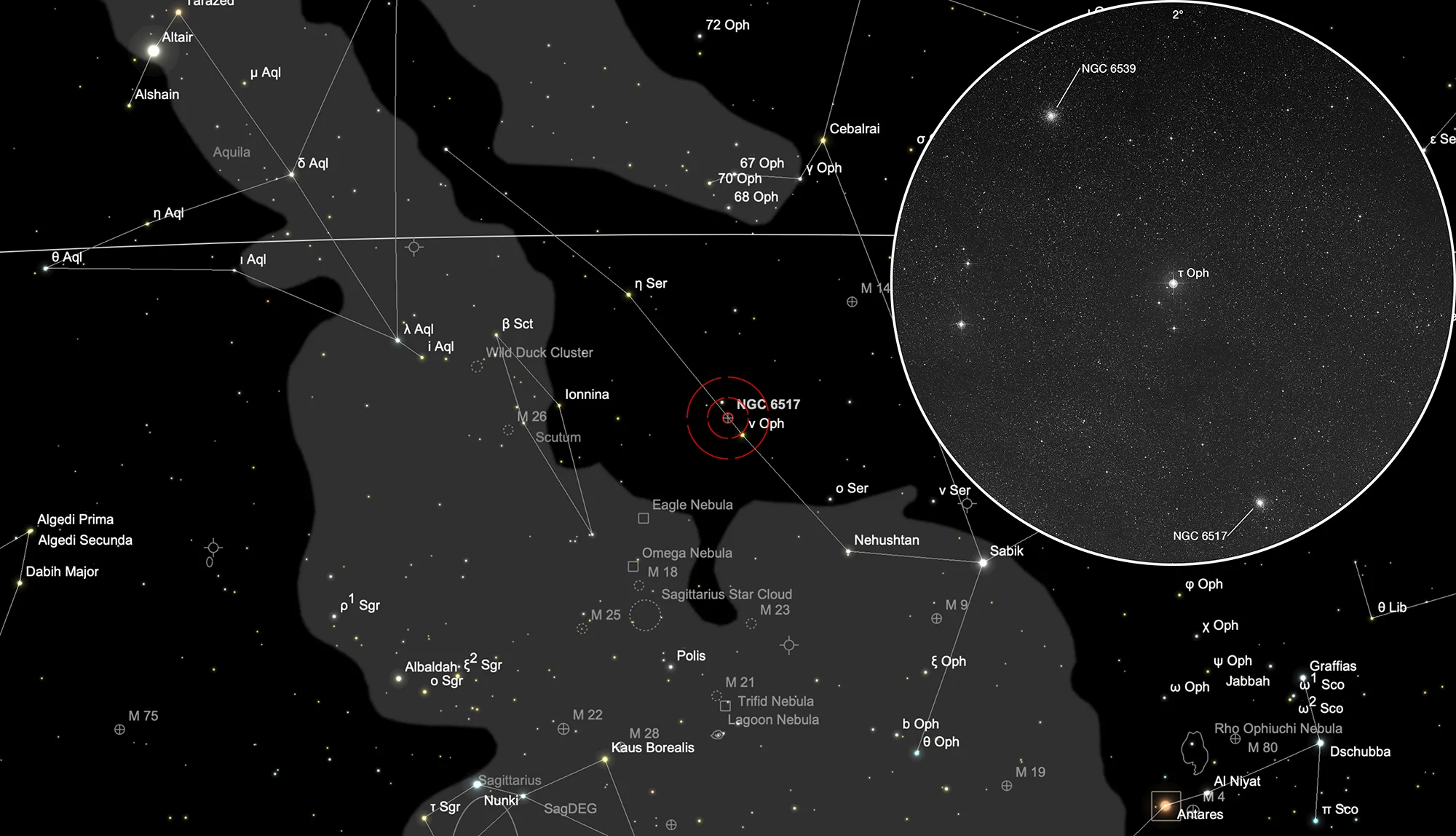Globular Clusters NGC 6517 & NGC 6539
History
The globular cluster NGC 6517 was discovered by William Herschel on 16 June 1784 and listed as II 199 with the notes: «pretty bright, pretty large, round, gradually brighter in the middle, resolvable.» [463] John Herschel observed it from the Cape of Good Hope twice on 27 May 1835 (sweep 591) and on 13 July 1836 (sweep 721). He identified it as a globular cluster and noted: «with left eye I discern the stars in it.» [11]
The nearby globular cluster NGC 6539 was missed by both Herschels. It was discovered in 1856 by Theodor Johann Christian Brorsen discovered at the Senftenberg Observatory in the present-day Czech Republic. Arthur Auwers observed this globular on 10 October 1860 with the Königsberg 6-inch refractor and reported that it «looked faint, but pretty well at 65x; it appears to be a faint star group of about 3' diameter, centrally surrounded by numerous stars 12m.» [364]
Physical Properties
| Name | RA | Dec | Type | vMag | Dim | MD | Dreyer Description | Identification, Remarks |
|---|---|---|---|---|---|---|---|---|
| NGC 6517 | 18 01 50.6 | -08 57 30 | GCL (IV) | 10.1 | 4 | 10.600 | pB, pL, R, rr | WH II 199; h 3719; GC 4357; GCL 81 |
| NGC 6539 | 18 04 49.8 | -07 35 07 | GCL (X) | 8.9 | 7.9 | 7.800 | No descript (Auw 39) | GC 4370; GCL 85 |
Finder Chart
The two globular clusters are located in the constellations Ophiuchus (NGC 6517) and Serpens (NGC 6539), in a radius less than 1° around 4.7/5.8 mag double star τ Ophiuchi. On 22 June they are in opposition to the Sun. From your location they can best be seen in the months February to November.
